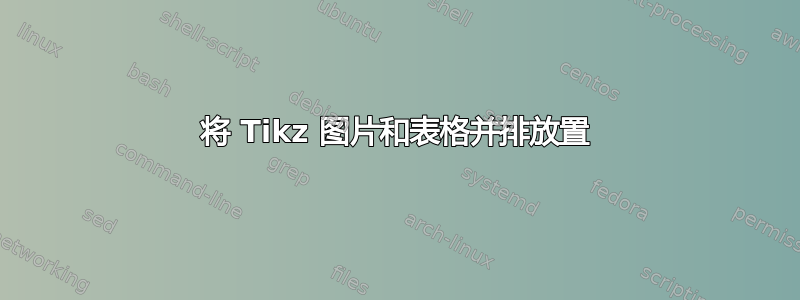
正如标题所述,我只是想将我的 TikZ 图片放在我的桌子旁边。
我不介意字幕是分开的还是连在一起的。
下面是我的代码。
\begin{figure}[h]
\centering
\begin{tikzpicture}[scale=0.9]
\begin{pgfonlayer}{nodelayer}
\node [style=station] (0) at (-2, 3) [label=left:E] {};
\node [style=station] (1) at (2, 3) [label=right:B]{};
\node [style=station] (2) at (-1.25, 0.75)[label=left:D] {};
\node [style=station] (3) at (1.25, 0.75) [label=right:C]{};
\node [style=station] (4) at (0, 4.5) [label=above: A]{};
\end{pgfonlayer}
\begin{pgfonlayer}{edgelayer}
\draw [style=edge] (0) to (4);
\draw [style=edge] (4) to (1);
\draw [style=edge] (1) to (3);
\draw [style=edge] (0) to (2);
\draw [style=edge] (3) to (2);
\draw [style=edge] (2) to (4);
\draw [style=edge] (4) to (3);
\draw [style=edge] (0) to (1);
\draw [style=edge] (0) to (3);
\draw [style=edge] (2) to (1);
\end{pgfonlayer}
\end{tikzpicture}
\caption{Weighted, complete graph $K_H$}
\end{figure}
\begin{table}[h]
\centering
\renewcommand{\arraystretch}{1.3}
\begin{tabular}{c|ccccc}
& A & B & C & D & E \\
\hline
A & -- & 4 & 7 & 6 & 12 \\
B & 4 & -- & 3 & 5 & 8 \\
C & 7 & 3 & -- & 2 & 5 \\
D & 6 & 5 & 2 & -- & 9 \\
E & 12 & 8 & 5 & 9 & --
\end{tabular}
\caption{Weights of edges in graph $K_H$}
\end{table}
答案1
我猜你喜欢画什么......不过,这应该接近你的意图:
由于您没有提供完整的文档,所以我没有理会您的图像代码(它可以进一步改进)。
- 要使图形和表格并行,你必须在同一个浮动环境中
- 对于他们的标题,你应该使用
\captionof{table}{...}在包中定义的caption或capt-of - 对于平行定位,您可以使用
minipage或table如下所述
\documentclass[12pt,a4paper]{article}
\usepackage{tikz}
\usetikzlibrary{automata,shapes.geometric}
\usepackage{array}
\usepackage[font=footnotesize, labelfont=bf]{caption}
\usepackage[active,floats,tightpage]{preview}
\setlength\PreviewBorder{1em}
\begin{document}
%---------------------------------------------------------------%
\begin{figure}[h]
\begin{tabular}{*{2}{>{\centering\arraybackslash}b{\dimexpr0.5\linewidth-2\tabcolsep\relax}}}
\begin{tikzpicture}[
state/.append style={minimum size=5mm}]
%\begin{pgfonlayer}{nodelayer}
\node [state] (0) at (-2, 3) [label=left:E] {};
\node [state] (1) at ( 2, 3) [label=right:B]{};
\node [state] (2) at (-1.25, 0.75)[label=left:D] {};
\node [state] (3) at ( 1.25, 0.75) [label=right:C]{};
\node [state] (4) at ( 0, 4.5) [label=above: A]{};
%\end{pgfonlayer}
%\begin{pgfonlayer}{edgelayer}
\draw (0) to (4);
\draw (4) to (1);
\draw (1) to (3);
\draw (0) to (2);
\draw (3) to (2);
\draw (2) to (4);
\draw (4) to (3);
\draw (0) to (1);
\draw (0) to (3);
\draw (2) to (1);
%\end{pgfonlayer}
\end{tikzpicture}
\caption{Weighted, complete graph $K_H$}
&
\renewcommand{\arraystretch}{1.3}
\begin{tabular}{c|ccccc}
& A & B & C & D & E \\
\hline
A & -- & 4 & 7 & 6 & 12 \\
B & 4 & -- & 3 & 5 & 8 \\
C & 7 & 3 & -- & 2 & 5 \\
D & 6 & 5 & 2 & -- & 9 \\
E & 12 & 8 & 5 & 9 & --
\end{tabular}
\captionof{table}{Weights of edges in graph $K_H$}
\end{tabular}
\end{figure}
%---------------------------------------------------------------%
\end{document}



